Idea by
Déborah López & Hadin Charbel
Pareid
Call for ideas 2020
Follicle BKK
Follicle BKK
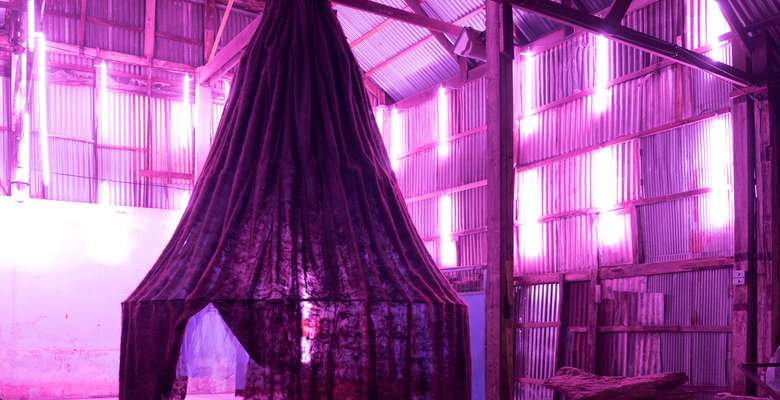
- Systemic changes
In 2019 there was a city wide pollution crisis in Bangkok resulting in a shutdown of most public and governmental buildings. With countless environmental sensors and real-time pollution aps, one might question to what extent people are affected.
Understanding the human body as an environmental repository, it was found that human hair is a complex matrix that retains and accumulates a number of toxic elements from which one could make inferences of the body as a whole, and consequently the city. Furthermore, it is a readily available material that is consistently and effortlessly grown, cut, discarded.
The project is an architectural triple-act consisting of (1) a pavilion made of human hair, (2) a protocol for collecting hair samples for toxic analyses (3) a toxi-cartography in the form of a publicly accessible interactive online map, aimed at stimulating a new material affect and public participation, while providing informal readings of the city’s inhabitants and spaces.
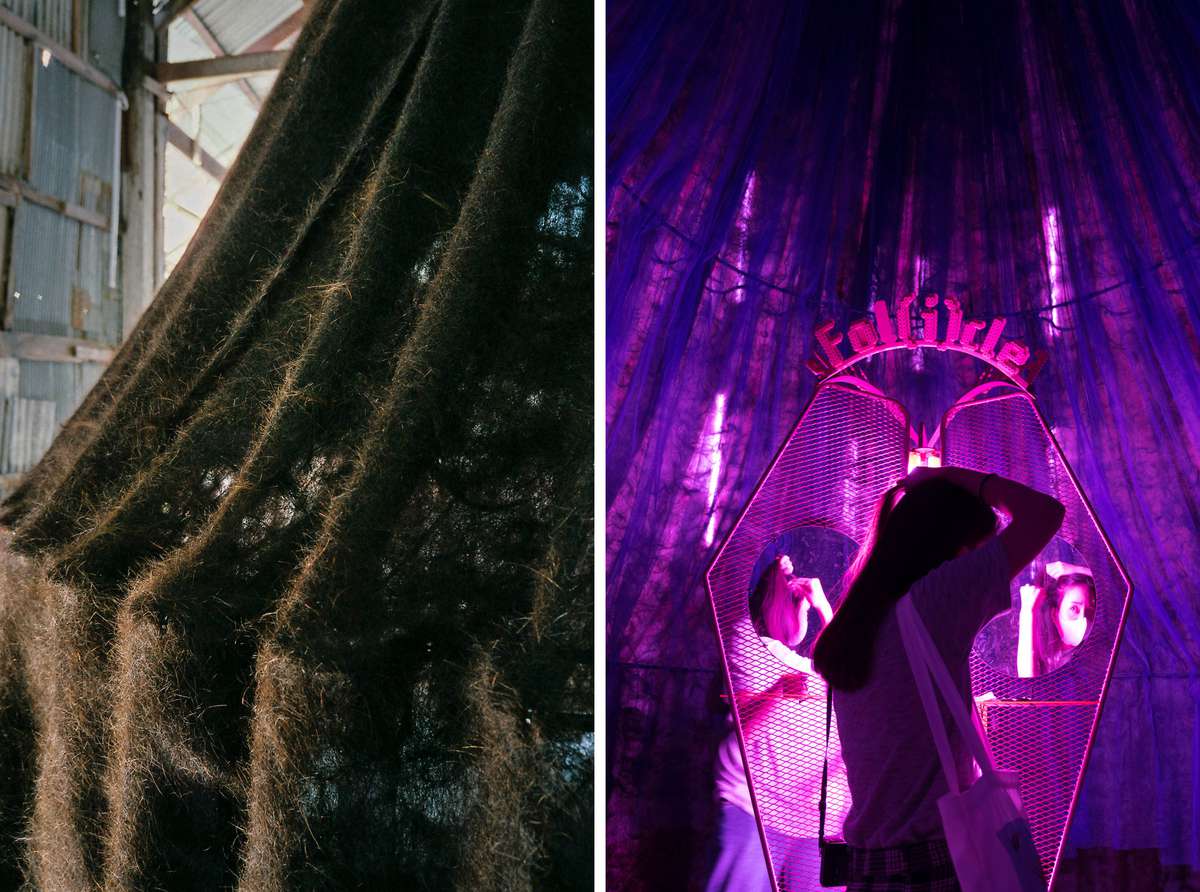
(Left) The pavilion possesses a fuzzy and grotesque quality attributed by the human hair exterior. (Right) A visitor cuts a sample of their own hair to participate in the protocol in generating the toxi-cartogpraphy, from which they retain an alphanumeric code for visiting the results online.

(Left) The pavilion is lit from the interior, revealing a transparent quality and visitor activation when they are present. (Right) An interior view of the hair cutting device awaiting public activation.

(Left) Detail of the pavilion when lit from the interior with varying transparencies and patterns produced by the hair. (Right) Detail of the pavilion exterior when sunlit, producing a more solid and beastly quality.

(Left) Anonymously filled out forms with the questionnaire, hair sample, and code. (Right) The hairs packaged for delivery to the lab to be analyzed with their appropriate codes.
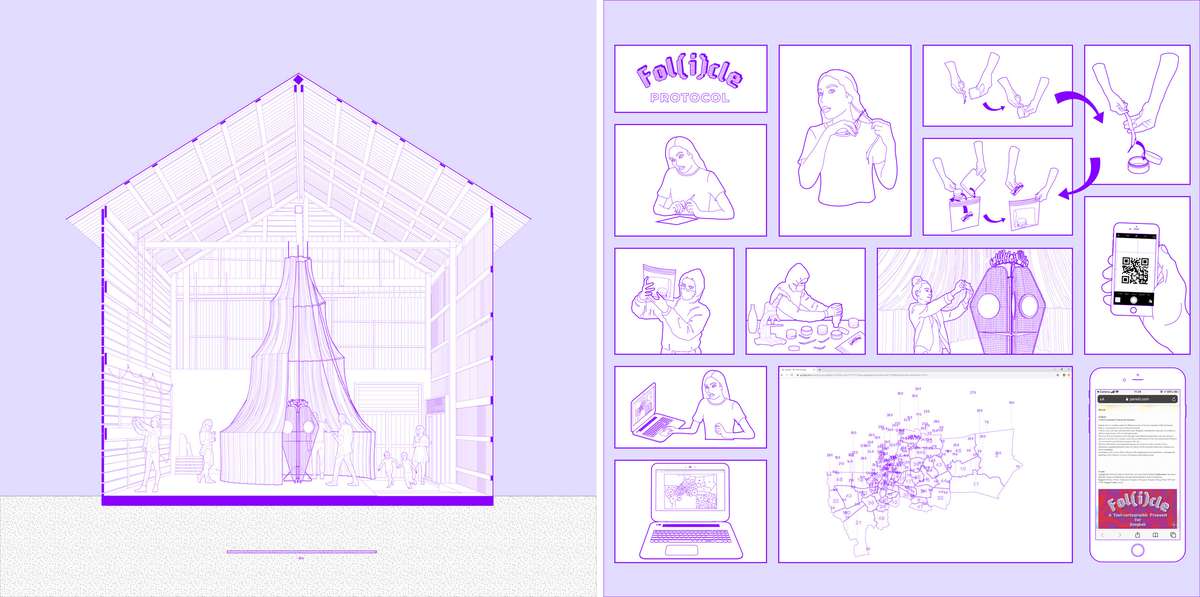
(Left) Section of the pavilion in context with visitors, and the device at the center. (Right) Graphic narrative illustrating the protocol from the perspective of the visitor, including cutting and sealing of the hair sample, retaining of the code, scanning of the QR code and access to the online
Follicle BKK
Follicle BKK

- Systemic changes
In 2019 there was a city wide pollution crisis in Bangkok resulting in a shutdown of most public and governmental buildings. With countless environmental sensors and real-time pollution aps, one might question to what extent people are affected.
Understanding the human body as an environmental repository, it was found that human hair is a complex matrix that retains and accumulates a number of toxic elements from which one could make inferences of the body as a whole, and consequently the city. Furthermore, it is a readily available material that is consistently and effortlessly grown, cut, discarded.
The project is an architectural triple-act consisting of (1) a pavilion made of human hair, (2) a protocol for collecting hair samples for toxic analyses (3) a toxi-cartography in the form of a publicly accessible interactive online map, aimed at stimulating a new material affect and public participation, while providing informal readings of the city’s inhabitants and spaces.
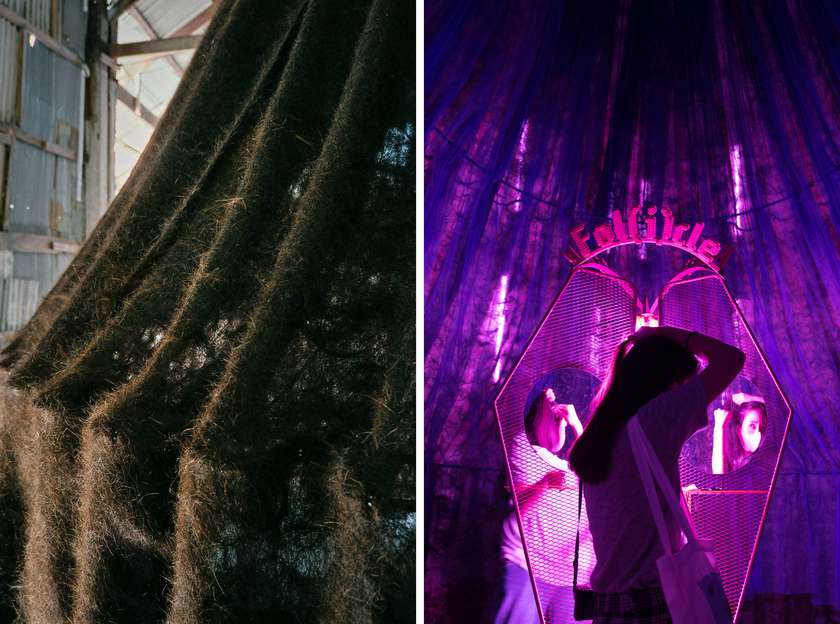
(Left) The pavilion possesses a fuzzy and grotesque quality attributed by the human hair exterior. (Right) A visitor cuts a sample of their own hair to participate in the protocol in generating the toxi-cartogpraphy, from which they retain an alphanumeric code for visiting the results online.

(Left) The pavilion is lit from the interior, revealing a transparent quality and visitor activation when they are present. (Right) An interior view of the hair cutting device awaiting public activation.

(Left) Detail of the pavilion when lit from the interior with varying transparencies and patterns produced by the hair. (Right) Detail of the pavilion exterior when sunlit, producing a more solid and beastly quality.

(Left) Anonymously filled out forms with the questionnaire, hair sample, and code. (Right) The hairs packaged for delivery to the lab to be analyzed with their appropriate codes.
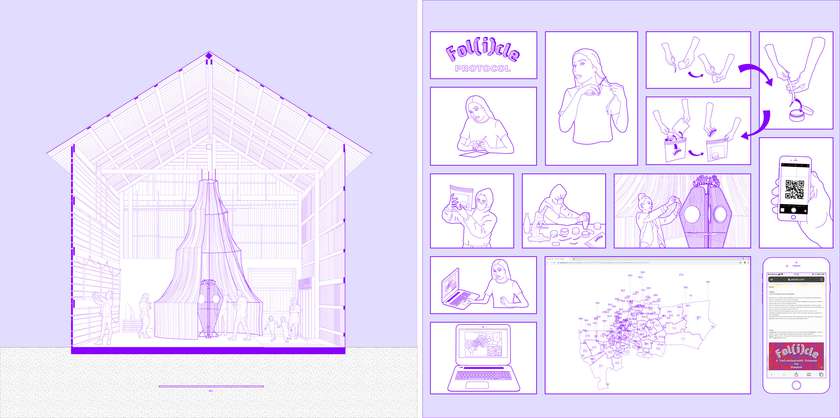
(Left) Section of the pavilion in context with visitors, and the device at the center. (Right) Graphic narrative illustrating the protocol from the perspective of the visitor, including cutting and sealing of the hair sample, retaining of the code, scanning of the QR code and access to the online